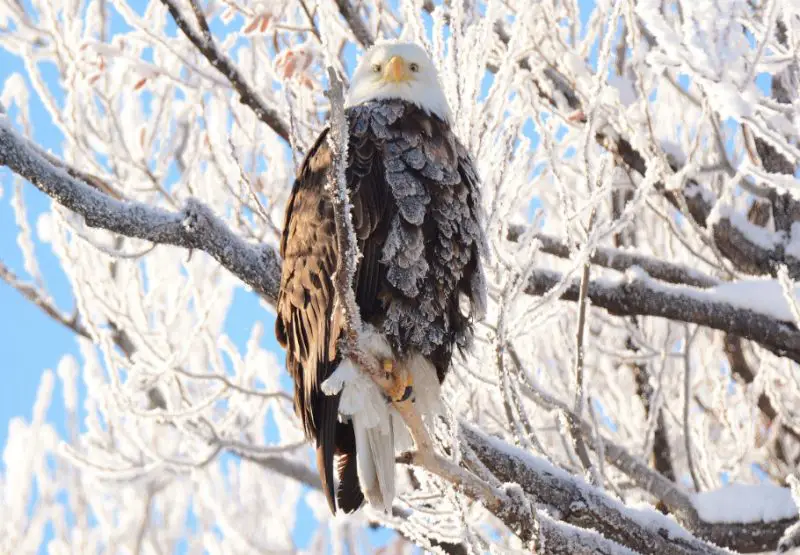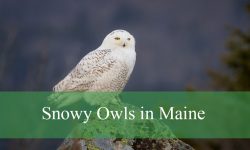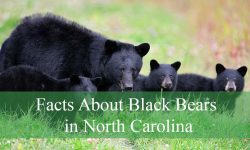When winter settles across Wisconsin, bald eagles begin to appear in surprising numbers along rivers, lakes, and reservoirs. These gatherings are not random events but the result of precise ecological conditions that align with the species’ winter survival strategies. With frozen landscapes, shifting prey dynamics, and open-water pockets created by complex hydrological systems, Wisconsin becomes one of the most reliable wintering sites for bald eagles in the United States.
Understanding why these raptors concentrate here reveals fascinating insights into their physiology, foraging behavior, and environmental dependencies. This article explores the hidden mechanisms behind winter eagle congregations, drawing from field research, long-term wildlife surveys, and ecological observations across the state.
The Environmental Triggers Behind Winter Eagle Concentrations

Wisconsin’s Open-Water Refuges Create Reliable Feeding Corridors
Large bodies of water across Wisconsin freeze as winter deepens, yet rivers such as the Wisconsin River and Mississippi River retain stretches that stay open. These open-water corridors act as lifelines for bald eagles, providing access to fish that remain active beneath the surface.
These natural openings are sustained by water flow, hydroelectric dams, and the thermal dynamics of deeper channels. Because fish concentrate near these zones, bald eagles gain predictable hunting and scavenging opportunities, making these sites essential for winter survival.
As temperatures decline, more eagles from northern regions—Minnesota, Canada, and the upper Midwest—move southward to exploit these consistent feeding areas.
Frozen Landscapes Increase the Availability of Winter Carrion
Snow and ice dramatically increase wildlife mortality during winter. Deer roadkill, winter-killed mammals, and fish trapped in ice transitions become abundant food sources. Bald eagles are adept at locating this carrion, using visual cues, wind patterns, and territorial surveillance to detect fresh food.
Carrion becomes especially important in the coldest periods when hunting live prey becomes energetically costly. Consuming carcasses allows eagles to retain calories with minimal effort, an essential advantage for thermoregulation.
This dependence on winter carrion partially explains why eagles remain near highways, rural fields, and riverbanks where winter fatalities are highest.
Thermal Winds and Open Valleys Enhance Their Flight Efficiency
Winter landscapes produce frequent temperature inversions and valley winds that help eagles conserve energy during flight. Rising warm air along river valleys provides natural lift, reducing the need for active wingbeats.
These favorable flying conditions allow bald eagles to patrol long stretches of river with minimal energy expenditure. They can scan for fish kills, injured waterfowl, and competition from other eagles while maintaining altitude with ease.
Such aerodynamic advantages make Wisconsin’s river systems particularly attractive winter destinations.
The Behavioral Ecology of Wintering Bald Eagles
Communal Roosting Strengthens Thermal Protection
Bald eagles gather in communal roosts during Wisconsin winters—often groups of 20 to 100 individuals. These roosts are typically located in tall hardwoods near open water but set back far enough to minimize wind exposure.
Communal roosting helps eagles conserve heat. By choosing dense canopies, sheltered slopes, or south-facing woodlands, they reduce heat loss during long winter nights.
This social behavior also allows information exchange. Eagles observe the early departure of experienced individuals in the morning, learning where the most productive feeding sites may be located.
Inter-Eagle Competition Shapes Their Daily Movements
While winter concentrations create opportunities, they also create competition. Dominant adults secure the best feeding zones, often displacing younger eagles with aggressive displays or direct aerial chases.
Juveniles—recognizable by their mottled brown plumage—are pushed toward marginal areas where carrion or fish scraps are more common than live prey. This competition influences how eagles spread out along river systems and how they schedule feeding attempts during the day.
Although conflict is frequent, this interaction acts as an important training ground for young birds learning foraging independence.
Winter Foraging Depends on Precision and Opportunism
Bald eagles adapt their foraging strategies to Wisconsin’s winter conditions with remarkable flexibility. They alternate between hunting live fish, stealing prey from other birds, scavenging carrion, and capitalizing on fish stunned by sudden cold snaps.
Their visual acuity allows them to locate potential food through snow glare and over long distances. When fish swim near the surface of open water, eagles execute rapid dives, though they rarely submerge like ospreys.
This flexible foraging style explains their resilience during unpredictable winter conditions.
Interactions With Waterfowl Shape Their Winter Behavior
Large concentrations of ducks and geese overwintering in Wisconsin provide another vital food source. Bald eagles track weak, injured, or isolated waterfowl, selecting individuals that pose minimal energy costs.
These predatory behaviors are most common during late winter when ice cover pushes waterfowl into tighter groups, creating vulnerability. Eagles also scavenge carcasses of birds killed by cold or predators.
This interaction has broader ecological consequences, influencing waterfowl distribution and behavior during harsh winters.
Physiological Adaptations for Surviving Wisconsin Winters
Dense Plumage Provides Arctic-Level Insulation
Bald eagles rely on an exceptional feather structure to withstand freezing temperatures. Their layered plumage traps heat efficiently, while down feathers create a thermal shield that prevents heat from escaping.
During severe cold, eagles adjust their plumage stance, fluffing or compressing feathers to regulate temperature. Their legs, though lightly feathered compared to snowy owls, contain specialized counter-current heat exchange that minimizes heat loss.
These physiological traits allow eagles to remain active even in temperatures that drop below −20°C.
Metabolic Adjustments Support High Energy Demands
Winter increases caloric requirements significantly. Bald eagles adapt by elevating their metabolic rate, allowing rapid heat production during extended exposure to cold winds.
When food is scarce, their metabolism can temporarily decrease to conserve energy. This dual metabolic capability keeps them functional during fluctuating winter conditions.
Eagles also store fat reserves during fall that serve as emergency fuel during prolonged storms or days with limited access to open water.
Talon Grip Strength and Beak Structure Enhance Winter Feeding
Winter carrion and frozen fish demand specialized feeding mechanics. Bald eagles possess strong talons capable of penetrating icy surfaces or gripping slippery prey in frigid rivers.
Their beaks, sharp and hooked, enable them to tear through frozen tissue efficiently. This anatomical advantage allows them to exploit winter food sources that many other raptors cannot.
Such adaptations significantly increase their winter survival rates in Wisconsin’s harsh conditions.
Why Wisconsin Attracts Migrating Bald Eagles From the North
Northern Birds Seek Stable Food Supplies
Bald eagles from northern Canada face extended periods of deep freeze when lakes lock up entirely. With fish inaccessible, they migrate southward into Wisconsin’s more dynamic waterways.
The Mississippi River Flyway becomes a major migration route, guiding thousands of eagles toward regions where dam spillways and current-driven openings keep water ice-free.
This migration pattern has been documented for decades, confirming Wisconsin’s status as a primary winter refuge.
Juvenile Eagles Use Wisconsin as a Learning Ground
Young eagles experiencing their first winter need reliable food sources and suitable roosting habitat. Wisconsin provides both, making it a natural training environment.
Juveniles learn hunting strategies by observing adults, practice competitive interactions, and develop site fidelity. Many return to the same wintering grounds year after year.
This formative period contributes to their long-term survival and eventual breeding success.
Geographic Position and Hydrological Diversity Create Ideal Conditions
Wisconsin’s location at the crossroads of major river systems, lakes, and wetlands gives it exceptional winter habitat diversity. The combination of deep reservoirs, shallow marshes, fast-flowing rivers, and hydroelectric operations maintains consistent open-water zones.
These varied aquatic environments offer food even during extreme winters, ensuring that bald eagles can distribute themselves according to food availability rather than overcrowding limited areas.
This environmental mosaic explains why eagle counts surge across different regions of the state each winter.
Human Influences on Winter Eagle Dynamics
Wildlife Management Enhances Habitat Stability
State conservation programs protect winter roosts, restrict disturbances, and maintain buffer zones along key river stretches. These measures help reduce stress on roosting eagles and ensure the continuity of essential habitat.
Public education campaigns encourage wildlife watchers to maintain safe viewing distances, protecting vulnerable juveniles still learning survival behaviors.
Such management actions have contributed to the strong population rebound observed over recent decades.
Hydro Dams Increase Open-Water Availability
Although hydroelectric dams alter natural river flow, they inadvertently create ideal winter sites for bald eagles. Warm discharge from dams prevents ice formation directly downstream.
These unfrozen pockets become hotspots for fish stunned by rapid temperature changes or pulled into turbulent flow, creating easy feeding opportunities for eagles.
As a result, dams significantly shape eagle distribution across Wisconsin.
Human-Generated Carrion Supplements Natural Prey
Roadkill, ice-fishing leftovers, and bycatch contribute additional food sources. While not ideal from a conservation viewpoint, these supplemental foods support both juvenile and adult eagles during challenging winters.
However, this also increases risks of vehicle collisions and lead poisoning, issues that wildlife agencies monitor carefully.
Annual Winter Concentrations and Long-Term Population Trends
Consistent Counts Reveal Predictable Patterns
Winter eagle surveys across Wisconsin show strong annual consistency, especially along the Mississippi River corridor. Population peaks typically occur in January, when ice coverage elsewhere is near maximum.
These data help scientists forecast eagle distribution, prey dependency, and year-to-year behavior shifts. Winter surveys also identify emerging threats such as habitat loss, pollutants, or weather pattern changes.
The long-term trends are encouraging: Wisconsin now hosts one of the largest winter eagle populations in the Lower 48.
Climate Variability Influences Future Eagle Gatherings
Warmer winters may reduce ice cover, affecting prey dynamics and waterbird concentrations. Some regions may see fewer eagles if fish disperse into wider areas.
Conversely, severe cold spells could increase gatherings along dam-controlled openings. Understanding these climate-linked variations is essential for predicting future winter distributions.
Continued monitoring ensures that conservation efforts evolve alongside changing environmental pressures.
FAQs About Bald Eagles in Wisconsin
Why do so many bald eagles gather in Wisconsin in winter?
Because the state has abundant open water, predictable fish availability, and large communal roosting sites that support winter survival.
Where can I see bald eagles in Wisconsin during winter?
Prime sites include the Mississippi River, Wisconsin River, Fox River, Prairie du Sac Dam, and Lake Pepin.
Do bald eagles migrate or stay year-round?
Wisconsin hosts both resident eagles and migrants from Canada. Many individuals move southward during extreme northern freezes.
What do bald eagles eat in winter?
They eat live fish, winter-killed fish, carrion, injured waterfowl, and occasionally small mammals when available.
Are bald eagles social during winter?
They form communal roosts for warmth and safety but maintain competition at feeding sites.
How cold can bald eagles tolerate?
Their plumage and metabolic adaptations allow them to function in temperatures well below zero.
Do dams really attract bald eagles?
Yes. Hydro dams create open-water zones with concentrated fish, making them major feeding hotspots.
Is it safe to observe bald eagles in winter?
Yes, but observers should maintain distance to avoid stress, especially near roosts.
Conclusion
Bald eagles gather in Wisconsin each winter because the state offers a combination of open water, dependable prey, sheltered roosting habitat, and aerodynamic landscapes that support efficient foraging. Their winter presence reveals a complex blend of physiological adaptation, behavioral flexibility, and ecological opportunity.
As conservation continues to protect waterways, roosting forests, and river corridors, Wisconsin will remain one of the most important wintering grounds for this emblematic species. Observing bald eagles in the cold months provides not only a powerful wildlife experience but also a window into the resilience and adaptability that define their survival across North America.






